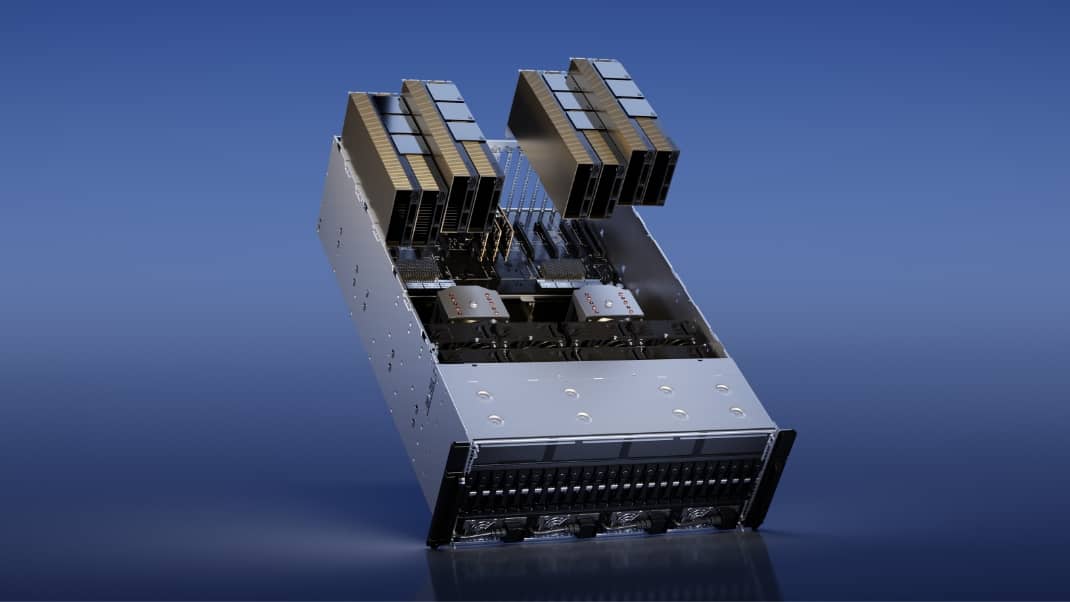
NVIDIA leads the AI race with its powerful GPUs and the CUDA API, making it indispensable for training AI models like ChatGPT and Stable Diffusion. Collaboration with major cloud providers, such as AWS and Azure, reinforces NVIDIA’s commitment to innovation across industries. The company’s stock soared 167% in 2023, with Wall Street analysts predicting further growth. NVIDIA H100 Tensor Core GPU delivers unprecedented performance for exascale workloads and large language models. NVIDIA’s AI Enterprise software suite streamlines AI adoption and maximises performance. The company’s GPUs are also revolutionising gaming and data analytics. How dominant is NVIDIA now, and is there any alternative?
Strategic partnerships and GPU dominance
NVIDIA’s strategic alliances with industry-leading cloud providers like AWS and Azure have fortified its position in the AI market. These partnerships enable enterprise-grade AI training workloads on extensive clusters of NVIDIA GPUs, further solidifying the company’s influence across various industries.
OpenAI, for instance, employed over 10,000 NVIDIA H100 and A100 GPUs to train its advanced ChatGPT model. Meanwhile, the Stable Diffusion AI project consumed a staggering 200,000 GPU hours on NVIDIA’s A100 GPUs. These examples highlight the crucial role NVIDIA GPUs play in AI model training and development.
Microsoft and AMD: A potential challenge to NVIDIA’s reign?
Although NVIDIA currently dominates the AI chip market, recent reports suggest that Microsoft is exploring a collaboration with AMD to improve AI capabilities, save server costs, and increase product appeal. This partnership could potentially challenge NVIDIA’s dominance in the AI space.
Microsoft Azure already uses “tens of thousands” of NVIDIA GPUs but is reportedly providing “support” and “engineering resources” to AMD for AI performance enhancement. AMD’s GPU architectures have so far struggled with AI workloads compared to NVIDIA counterparts. However, a partnership with Microsoft could help AMD catch up and offer a viable alternative to NVIDIA’s products.
Impact on gaming and data analytics
NVIDIA’s GPU technology has revolutionised not only AI but also gaming and data analytics. The company’s Avatar Cloud Engine (ACE) for Games, for example, has transformed gaming experiences by bringing intelligence to non-playable characters (NPCs) through AI-powered natural language interactions. NVIDIA ACE for Games relies on optimised AI foundation models like NVIDIA NeMo, NVIDIA Riva, and NVIDIA Omniverse Audio2Face.
In data analytics, NVIDIA RAPIDS™ Accelerator for Apache Spark™ 3.x enables GPU-accelerated data processing and unified analytics pipeline, resulting in up to 20X higher performance compared to CPU-only Apache Spark. These developments showcase NVIDIA’s versatility and impact across various sectors.
Future outlook
With the global AI chip market projected to grow from $17 billion in 2022 to $227 billion by 2032, NVIDIA’s expertise in GPUs and control of the GPU data centre market suggest a bright future for the company. As Angelo Zino, an equity analyst at CFRA, stated, “NVIDIA is clearly going to be the biggest winner in our view”.
While potential challengers like the Microsoft-AMD collaboration may emerge, NVIDIA’s current market position, innovative product portfolio, and strategic partnerships make it the clear frontrunner in the AI race.

